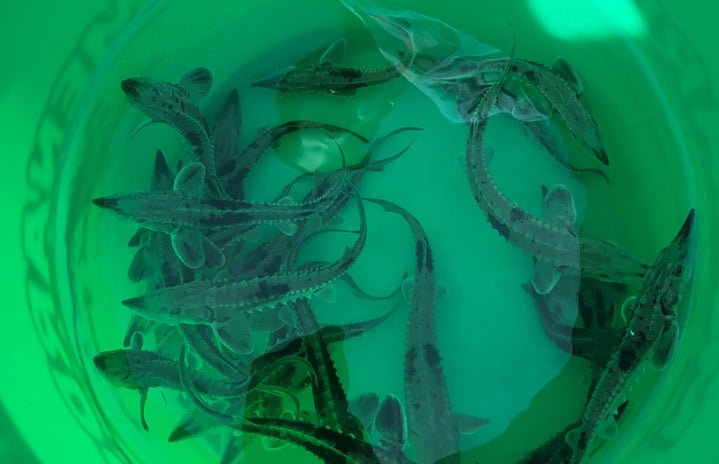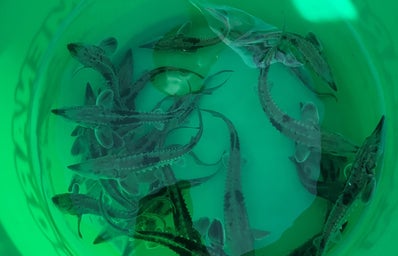Marine biology has many areas of focus, including species conservation of organisms in both fresh and saltwater. With a large, diverse ecosystem, every organism can be individually studied. While taking marine biology through Michigan State University, I learned about a unique opportunity concerning local marine life populations. The lake sturgeon native to Michigan’s waters are severely dwindling in population, both in lakes and inland rivers.
Many factors contribute to the decrease in population. Fishing for these species can bring a big catch, since sturgeon living long lives have the potential to reach 20 feet long. People will often not release the specimens back into the water, causing a severe loss of mature adults. However, the decrease is not only attributed to fishing. Lake sturgeon also take a plethora of years to reach an age where they can begin to reproduce. Most members of this species will not begin reproducing until reaching approximately 14 years of age. These factors, along with predation, all contribute to the low levels observed in the wild today.
On Sept. 23, four locations received 150 three-and-a-half-month-old lake sturgeon to be released into the Saginaw Bay Watershed. The closest location to MSU was on the Shiawassee River, in Cole Park, Chesaning, with release scheduled for noon. Each of the maturing sturgeon had been shipped from a fish hatchery in Wisconsin. This hatchery had taken a male and female of the species to spawn in a tank before releasing them back into the wild. The offspring were then taken to the hatchery to mature before reaching a size that gives the best chances of future survival.
Before lining up to get buckets containing the young fish, several were placed in a tank for observation and education. All the attendees were able to take pictures of the fish, sign up to protect the watershed, and learn about other ways to help maintain a healthy marine ecosystem for all the organisms in and outside the water. Children, teachers, students, couples, and even just people that happened to be passing by were all ecstatic to be a part of something great. Everyone was given the chance to release at least one specimen into the Shiawassee River and watch them swim off into their new homes. It was a multistep process that began with dipping your hands in the water of the river. Then, a fish could be held for a quick picture before being released into the rivershed.
It was a magical experience to participate in, keeping our world beautiful for future generations to enjoy. I highly recommend taking part in a similar project, even if it is just beach cleaning. There is only one world for future generations to enjoy. Too many species have already disappeared. Let’s band together to protect what’s left.


